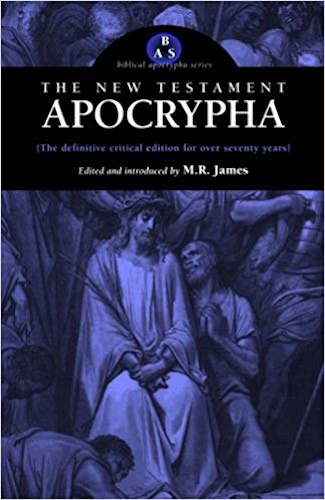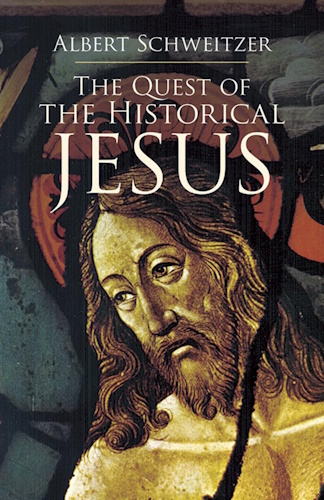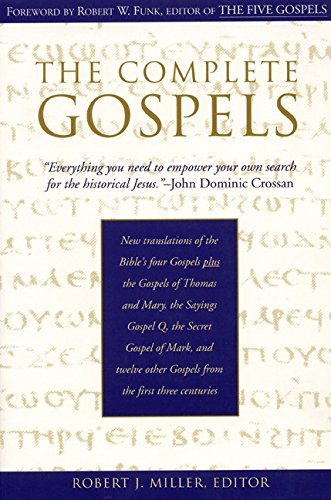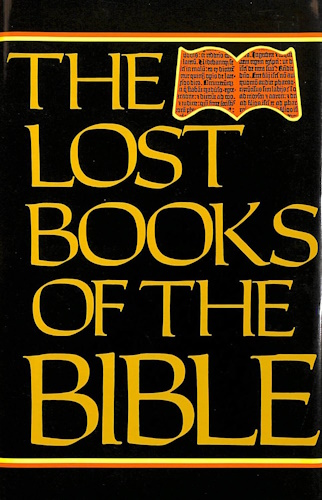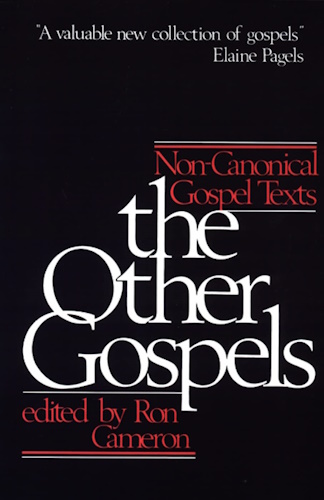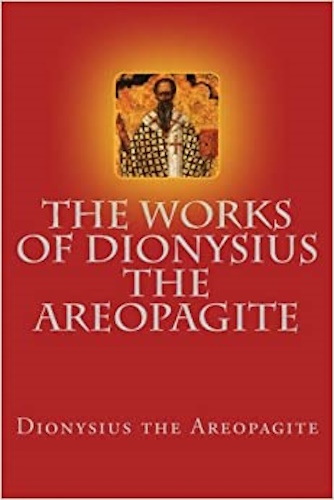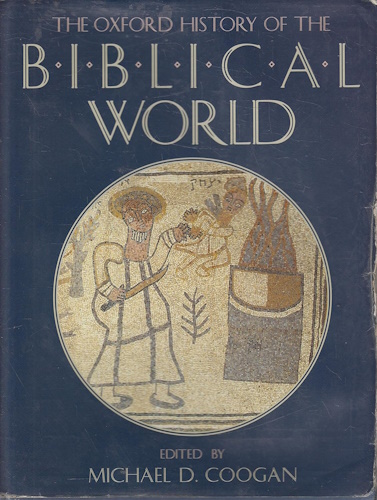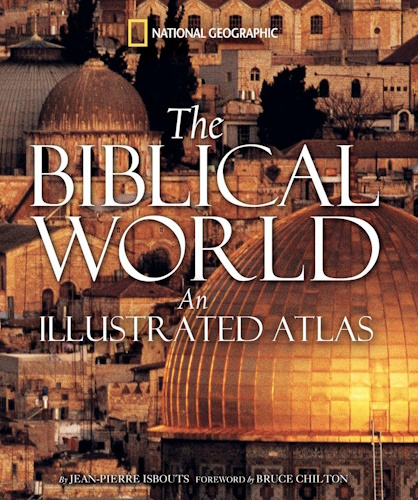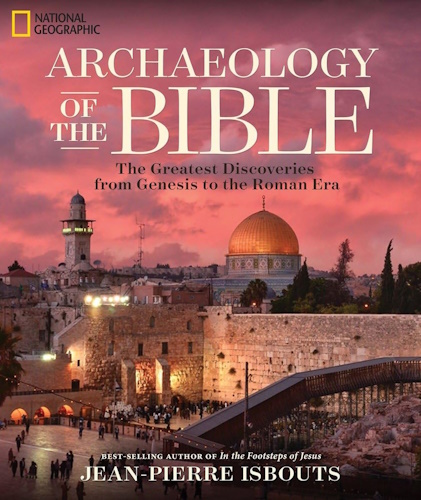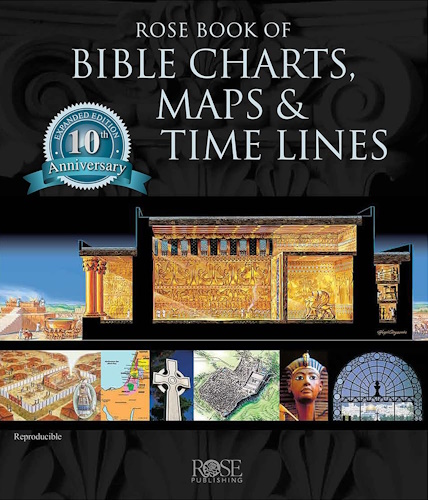
The works of Dionysius the Areopagite
Prefactory Material to Volume 2
THE WORKS
OF
DIONYSIUS THE AREOPAGITE.
PART II.
THE HEAVENLY HIERARCHY,
AND
THE ECCLESIASTICAL HIERARCHY
NOW FIRST TRANSLATED INTO ENGLISH,
FROM THE ORIGINAL GREEK,
BY THE
REV. JOHN PARKER, M.A.,
Author of
"Christianity Chronologically Confirmed." &c.
James Parker and Co,
6 SOUTHAMPTON-STREET, STRAND, LONDON;
AND 27 BROAD-STREET, OXFORD.
1899.
CONTENTS.
| Page | |
| Dionysius the Areopagite and the Alexandrine School | v |
| On the Heavenly Hierarchy | 1 |
| On the Ecclesiastical Hierarchy | 67 |
| Appendix:— | |
Lists of Bishops |
163 |
Apostolic Traditions generally in abeyance |
167 |
| Index | 168 |
TO
THE MEMORY OF
EDWARD BOUVERIE PUSEY,
THEOLOGIAN
OF THE
CHURCH OF BRITAIN.
BOOKS TO BE READ.
1st. "The doctrine of the Lord, through the Twelve Apostles, to the Gentiles." Spence, Nisbet.
2nd. "The Apostolic Constitutions." Lagarde. Williams and Norgate, 1862.
3rd. "Coptic Constitutions." Lagarde. Tattam, 1845,
4th. Justin Martyr—for Liturgy.
5th. Hippolitus, "Refutation of all heresies." Duncker. Göttingen, 1859.
6th. Hierocles on "Golden Verses" of Pythagoras. Roger Daniel. London, 1654.
7th. "Ecclesiastical History (in Greek) from establishment of the Church to our own time." By Professor Kyriakos. Athens, 1898.
8th. "St. Denys, l'Areopagite, premier Evèque de Paris." Darras, 1863. Vives, Paris.
9th. Gale's "Court of the Gentiles." Hall, Oxon, 1672.
10th. Dexter's Chronicle. Migne, T. 31.
11th. Monuments inédits. Faillon.
DIONYSIUS THE AREOPAGITE
AND
THE ALEXANDRINE SCHOOL.
ALEXANDRIA became the home of Christian Philosophy, but Athens was its birthplace. Pantaenus and Ammonius-Saccus were chief founders of the Alexandrine School. They were both Christian. They both drew their teaching from the Word of God, " the Fountain of Wisdom," and from the writings of Hierotheus, and Dionysius the Areopagite—Bishops of Athens. For several centuries there had been a Greek preparation for the Alexandrine School. As the Old Testament was a Schoolmaster, leading to Christ, so the Septuagint, Pythagoras, Plato, Aristobulus, Philo, and Apollos were heralds who prepared the minds of men for that fulness of light and truth in Jesus Christ, which, in Alexandria, clothed itself in the bright robes of Divine Philosophy.
Pantaenus was born in Athens, a.d. 120, and died in Alexandria, a.d. 213. He was Greek by nationality, and Presbyter of the Church in, Alexandria by vocation. First, Stoic, then Pythagorean, he became Christian some time before a.d. 186, at which date he was appointed chief instructor in the Didaskeleion,
page vi
by Demetrius, Bishop of Alexandria. Pantaenus recognised the preparation for the Christian Faith in the Greek Philosophy. Anastasius-Sinaita describes him as "one of the early expositors who agreed with each other in treating the first six days of Creation as prophetic of Christ and the whole Church."
Eusebius says, that "Pantaenus expounded the treasures of the Divine dogmas preserved direct, as from father to son, from St. Paul and other Apostles. Phptius records that Pantaenus was pupil of those who had seen the Apostles, but that he certainly had not listened to any of them themselves. Now, if Pantaenus was pupil of those who had seen the Apostles, and yet had, not listened to their oral teaching, it is natural to infer that he was pupil through their writings. I am a pupil of Dr. Pusey, but I never listened to his oral teaching; I am pupil through his writings. Now, there exist, to this day, the writings of two Presbyters who had seen the Apostles—both, converts to the faith through St. Paul,—-whose writings contain the treasures of the Divine dogmas, received from St. Paul and the other Apostles. Those two Presbyters are Hierotheus and Dionysius the Areopagite, both ordained Bishop of Athens by St. Paul. Dionysius the Areopagite expressly calls, St. Paul his "chief initiator," and as such, gives his teaching on the holy Angels, in the sixth chapter of the Heavenly Hierarchy; and frequently describes St. Paul as his "chief instructor."
If, then, we can prove that the writings of
page vii
Dionysius existed before and were known in Alexandria, when Pantaenus delivered his lectures in that city, we may fairly infer that Pantaenus would know, and knowing, would use, the writings penned by the Chief of his own Areopagus, and Bishop of his own Athens.
Historical criticism does not permit us to reject probabilities, merely because they confirm the Christian Faith.
Dexter, in his Chronicle, collected from the Archives of Toledo and other churches in Spain, gives this testimony:—
"U.C. 851 (a.d. 98). Dionysius Areopagita dicat Eugenio Marcello, dicto, propter ingenii excellentiam, Timotheo, libros de Divinis Nominibus."
Dionysius of Alexandria, writing to Tope Sixtus II., c. 250, respecting the writings of Dionysius the Areopagite, affirms "that no one can intelligently dispute their paternity—that no one penetrated more profoundly than Dionysius into the mysterious depths of Holy Scripture—that Dionysius was disciple of St. Paul, and piously governed the Church of Athens." If, then, the Bishops of Alexandria and Rome exchanged letters only a few years after the death of Pantaenus, and only seven years after the death of Ammonius, and in those letters affirmed the writings to be undoubtedly written by Dionysius the Areopagite, it would be the height of absurdity to affirm that such writings were unknown to Pantaenus and Ammonius.
But we do not need to base our proof on mere
page viii
supposition. Routh gives two fragments of Pantaenus. The second is a distinct echo of Dionysius. In Divine Names (c. 7), Dionysius discusses how Almighty God knows existing things, and explains the text; "He, knowing all things before their birth" as proving that "not as learning existing things from existing things, but from Himself, and in Himself, as Cause, the Divine Being pre-holds and pre-comprehends the notions and essence of all things, not approaching each several thing according to its kind, but knowing and containing all things within one grasp of the cause. Thus Almighty God knows existing things, not by a knowledge of existing things, but by that of Himself." Dionysius, c. V. s. 8, speaking of creation, declares that the Divine and goodvolitions of Almighty God define and produce existing things.
Pantaenus teaches the same: "Neither does He know things sensible sensibly (αἰσθητῶς), nor things intelligible intellectually. For it is not possible that He, Who is above all things, should comprehend things being, after things being (κατὰ τα ὄντα), but we affirm that He knows things being" as His own volitions . . . yea, as His own volitions, Almighty God knows things being, since by willing (θέλων), He made all things being."
In Mystic Theology, c. V., Dionysius says, "Almighty God does not know existing things, qua existing." The teaching of Ammonius-Saccus is the same; Ammonius uses the word βούλημα, Dionysius and Pantaenus, θελήματα, of God, as Source of Creation.
page ixBut, though the known fragments of Pantaenus are few, we possess abundant writings of two pupils, Clement of Alexandria and Origen, from which we may gather the teaching of their master. Clement speaks of Pantaenus as his "great instructor and collaborator." Such is the similarity between the writings of Clement and Dionysius, that some have hazarded the conjecture that Clement the Philosopher, mentioned by Dionysius, was Clement of Alexandria! I give only one familiar illustration. Clement writes: "As then, those riding at anchor at sea, drag the anchor, but do not drag it to themselves, but themselves to the anchor, thus those who are drawn to God in the gnostic life, find themselves unconsciously led to God." Dionysius, D. N., c. III. s. 1, says, "or, as if after we have embarked on ship, and are holding on to the cable, attached to some rock, we do not draw the rock to us, but ourselves, and the ship, to the rock. Wherefore, before everything, and especially theology, we must begin with prayer; not as though we ourselves were drawing the power, which is everywhere, and nowhere present, but as, by our godly reminiscences and invocations, conducting ourselves to, and making ourselves one with It."
Origen confessed that Pantaenus was his superior in the philosophy of the schools, and that he moulded his teaching upon the model of Pantaenus. Do the writings of Origen bear the stamp of Dionysius and Hierotheus? Origen, on the resurrection of the body, says, "For how does it not seem absurd
page x
that this body which has endured scars for Christ, and, equally with the soul, has borne the savage torments of persecutions, and has also endured the suffering of chains, and rods, and has been tortured with fire, beaten with the sword, and has further suffered the cruel teeth of wild beasts, the gallows of the cross, and divers kinds of punishments,—that this should be deprived of the prizes of such contests. If forsooth, the soul alone, which not alone contended, should receive the crown, and its companion the body, which served it with much labour, should attain no recompense, for its agony and victory,—how does it not seem contrary to all reason, that the flesh, resisting for Christ its natural vices, and its innate lust, and guarding its virginity with immense labour,—that one, when the time for rewards has come, should be rejected as unworthy and the other should receive its crown? Such a fact would undoubtedly argue on the part of God, either a lack of justice or a lack of power." Dionysius (E. H., c. VII.) says, "Now the pure bodies of the holy souls, enrolled together as yoke-fellows, and fellow travellers, which together strove during the divine contests, throughout the Divine Life, in the unmoved steadfastness of the souls, will together receive their own resurrection. For, having been made one with the holy souls, to which they were united during this present life, by having become members of Christ, they will receive in return the godlike and incorruptible immortality and blessed inheritance." Dionysius (D. N., c. VI. s. 2) says, "what is still more
page xi
divine, It promises to "transfer our whole selves (I mean souls and bodies, their yoke-fellows), to a perfect life and immortality. Others again do this injustice to bodies, that, after having toiled with the holy souls, they unjustly deprive them of the holy retributions, when they have come to the goal of their most divine course." "For if the man have passed a life dear to God in soul and body, the body which has contended throughout the Divine struggles will be honoured together with the devout soul."
To shew that Origen knew the works of Hierotheus, we give an extract from his letter to Gregory: "Would that you might both participate in and continually augment this part, so that you may not only say, 'we are partakers of Christ,' but also partakers of God." Papias148, Bishop of Hierapolis (fragment V.) says, "the Presbyters, the disciples of the Apostles, say that this is the gradation and method of those who are saved, and that they advance through steps of this nature, and that, moreover, they ascend through the Spirit to the Son, and through the Son to the Father; and that, in due time, the Son will yield up His work to the Father." Who the Presbyters, the disciples of the Apostles were, we may gather from the three last chapters of the "Book of Hierotheus149," in which the very same doctrine is taught. Is it not, then, a legitimate inference, that when Photius says " that
page xii
Pantaenus was a pupil of the Presbyters who had seen the Apostles," he designated Hierotheus and Dionysius the Areopagite, generally known under that title?
Ammonius Saccus was born of Christian parents in Alexandria, and died in that city, a.d. 242.
Anastasius Sinaita calls him "the Wise," and Hierocles, "the taught of God." Besides being famous for his expositions of Holy Scripture, he wrote the "Diatesseron," or "Harmony of the Gospels," contained in the Bib. Patrum. In a.d. 236, he wrote the agreement between Moses and Jesus. He was the great conciliator, who sought the good in every system, and to make all one in Christ. Pressensé beautifully describes him as a man who wished to believe and to know—to adore and to comprehend—to conciliate the Greek Philosophy with the Mysteries of the East. He wrote a commentary on the golden verses of Pythagoras, which Hierocles published, as well as reproduced his other works. The titles of his books, mentioned by Photius, such as "Providence" and "Free Will," recall those of the lost books of Dionysius, of which we have only a summary in his known works. (Cod. 251-214.)
Ammonius was surnamed Saccus from having been a corn carrier. Virgil, Shakespere, Milton, were great geniuses in themselves, but when we know the sources from which they drew, we can better understand their achievements.
Dionysius was indebted to Hierotheus—Ammonius
page xiii
drew from Dionysius. This we shall shew, not as we might, by his works as described by Photius, but from Plotinus, his disciple, in order that we may have the prevailing proof, to some minds, of testimony not necessarily Christian.
Plotinus was born in Lycopolis, a.d. 205, and died in Campagna, a.d. 270. At the age of 29, he began to search for truth, in the schools of Alexandria. He wandered from teacher to teacher, but could find no rest until he was persuaded to go and hear Ammonius-Saccus. After listening to him, he exclaimed, "This is what I sought."
Plotinus remained under him eleven years, until the death of Ammonius, a.d. 242. In a.d. 244, Plotinus began to teach in Rome. Plotinus was not a refined scholar. Porphyry, therefore, committed his teaching to writing. Porphyry was regarded as the greatest enemy to the Christian Faith in the early centuries. Persecutors burned the bodies of Christians, but Porphyry sought to undermine their faith in the Holy Scriptures, by quibbles of unbelief, which have been revived to-day as "New Criticism." Porphyry wrote against the Holy Scriptures with a bitterness engendered by a conviction of their truth. Now, it is a startling fact, that though the teaching of Plotinus comes to us through Porphyry, there is not a word in the Enneades, in which the teaching of Plotinus is given, against the Christian Faith. It is true that Eutochius published another version of the teaching of Plotinus, on the ground that his teaching was coloured by Porphyry, but we
page xiv
prefer to rest our proof on Porphyry, as not being prejudiced in favour of the truth.
Let us then first see what Plotinus teaches respecting the Holy Trinity. He says, "We need not go beyond the three Hypostaseis" (Persons). It is true that Plotinus presents that Trinity as "One," "Mind," and "Soul," whereas Dionysius gives the formula "Father, Son, and Spirit." Occasionally Plotinus uses "Logos" instead of "Mind." But even this substitution of "One" for "Father" may be traced to Dionysius, who speaks of the Triad, ἐναρχικὴ and even ἐναρχικῶν ὑποστὰσεων, "One springing." The "One" represents the Father. Plotinus says, "We may represent the first principle, 'One,' as source, which has no other origin than Itself, and which pours Itself in a multitude of streams without being diminished by what it gives." Dionysius speaks of the "Father" as sole source of Godhead, and says that "the Godhead is undiminished by the gifts imparted." In Chap. XII. of Divine Names, Dionysius treats of "One" and "Perfect" as applied to Almighty God.
Let Us now hear Plotinus on the "Beautiful" Enneades (I. 6-7). Plotinus says, "The soul advances in its ascent towards God, until being raised above everything alien, it sees face to face, in His simplicity, and in all His purity, Him upon Whom all hangs, to Whom all aspire; from Whom all hold existence, life and thought. What transport of love must not he feel who sees Him! with what ardour ought he not to desire to be united to Him! He,
page xv
who has not seen Him, desires Him as the Good; he who has seen Him, admires Him as the sovereign Beauty; and struck at once with astonishment and pleasure, disdains the things which heretofore he called by the name of Beauty. This is what happens to those to whom have appeared the forms of gods and demons;—they no longer care For the beauty of other bodies. What think you, then, should he experience who has seen the Beautiful Himself,—the Beautiful surpassing earth and heaven! The miserable is not he, Who has neither fresh colour nor comely form, nor power, nor royalty; it is alone he, Who sees himself excluded from the possession of Beauty—a possession in comparison with which he ought to disdain royalty, rule of the whole earth, of the sea, and heaven itself, if he should be able, by abandoning, by despising all these, to rise to the contemplation of the Beautiful, face to face." Plotinus also recognised, "that the eye soiled with impurity could never bear the sight, or attain to the vision of that Beauty. We must render the organs of vision analogous and like to the object that they would contemplate. Every man ought to begin by rendering himself beautiful and divine to obtain a Vision of the Beautiful and the Deity." Well might St. Augustine say, that "with the change of a few words, Plotinus became concordant with Christ's religion." No wonder that Gregory and Basil quoted so largely from Plotinus. Let us now hear what Dionysius says of the "Good and Beautiful":—
page xvi
"Goodness turns all things to Itself; all things aspire to It, as source and bond and end. From this Beautiful comes being to all existing things. All things aspire to the Beautiful and Good,—and there is no existing thing which does not participate in the Beautiful and Good." Read the Fourth Chapter of the Divine Names.
Porphyry records that Plotinus attained to that vision of the Beautiful three times during his life. How that vision of the Beautiful is to be attained, Dionysius describes in the "Mystic Theology:"—"But thou, O dear Timothy, by thy persistent commerce with the mystic visions, leave behind both sensible perceptions and intellectual efforts, and all objects of sense and intelligence, and all things not being and being, and be raised aloft agnostically to the union, as attainable, with Him Who is above every essence and knowledge. For by unchecked and absolute extasy, in all purity, from thyself, and all, thou wilt be carried on high to the superessential Ray of the Divine Darkness, when thou hast cast away all and become free from all." Ammonius had such extasy during his lectures, in which he seemed to have Divine visions.
Plotinus differs from Dionysius in regarding creation as an act of necessity, whereas Dionysius regards it as an act of love. Plotinus treats evil as "an elongation from God." Dionysius speaks of Almighty God as immanent in matter the most elongated from spirit. Plotinus traces evil to matter; Dionysius to the fallacious choice of a free agent.
page xvii
May it not be that the pagan colouring of Porphyry in these respects led Eutochius to give a more faithful and consistent account of the teaching of Plotinus.
But the crowning proof that Dionysius was the source from which the Alexandrine School drew much of its wisdom, is Proclus (450-485). Suidas affirmed long ago that Proclus cribbed whole passages from Dionysius. Professor Stiglmayr fills seven pages with parallel passages.
Vachérot describes certain chapters of the "Divine Names" as extracts from Proclus, word for word, and says the whole doctrine of Dionysius seems to be a commentary upon the Theology of Alexandria. Barthélémy St. Hilaire says that Dionysius and Scotus Erigena, almost entirely implanted, in the middle age, the doctrine of Neo-Platonism. Matter is more profound; Professor Langen finds in Dionysius the "characteristics of Neo-Platonic speculation." The similarity of doctrine is denied by none. Which writings appeared first? that is the question.
Dexter commemorates the "Divine Names" a.d. 98150.
Polycarp quotes Dionysius verbatim as "a certain one." Jerome quotes him as "quidam Graecorum." Dionysius of Alexandria (a.d. 250), writing to Sixtus II., declares that no one can intelligently doubt that the writings are those of Dionysius, the convert of St. Paul, Bishop of Athens.
page xviii
Tertullian, expresses the Agnosia "nihil scire omnia scire," Origen quotes him by name. Theodore (a.d. 420) answers objections,—whom Photius approved. Gregory calls Dionysius "an ancient and venerable Father." The Second Council of Nicea quotes the very words, contained in the "Ecclesiastical Hierarchy," c. I. s. 4, as those of the great Dionysius. Bishop Pearson proves that the best judges in the sixth, fifth, fourth and third centuries regarded the writings as written: by Dionysius the Areopagite. German scholars to-day admit that the external testimony is in favour of their genuineness.
Yet eccentric critics, on account of the precise theology, cannot believe that the works were written; by a learned Greek,—Chief of the Areopagus—who forsook all to follow Christ,—the convert and disciple of St.. Paul,—the familiar friend of St. John and other Apostles, to whom our Saviour revealed the mysteries of the Father; but those critics can believe that an unknown man, whose century no one can fix, and possibly a Syrian, may have gleaned from writers of the first four centuries these theological pearls expressed in Greek in a style unique and always like itself. They can, believe that the Author of these Divine writings, would incorporate, fictitious allusions to persons and events of the apostolic, age, to add lustre to incomparable works, and to impute them to another. They can believe that writings, so composed, were foisted upon a credulous Christendom, so that Dionysius of Alexandria, Maximus, St. John Damascene, and the
page xix
Council of Nicea, accepted them as the genuine works of Dipnysius. I do not belong to that school. Only unbelief could believe anything so incredible. Rational men will not hazard the surmise that works known in the first century were gleaned from writings composed four hundred years afterwards.
The tone of the Alexandrine School may be further illustrated from Amelius and Dionysius the Sublime. Amelius attended Plotinus twenty-four years as companion and pupil. Eusebius gives an extract from his writings, in which Amelius says, "This plainly was the Word, by Whom, being Eternal, things becoming became, as Heraclitus would say." It was probably he who said, "the Prologue of St. John's Gospel ought to be written in gold, and placed in the most conspicuous place in every church." De Civ. Dei, LX. c. 29. Dionysius, the famous secretary of Zenobia, attended the lectures of Ammonius-Saccus. He was the "arbiter" of all literary questions. He expresses his admiration, De sub. L. 9, of the diction of Moses in the description of the six days' creation, and numbers St. Paul amongst the most brilliant Greek orators, as a man who propounded a "dogma beyond demonstration."
We claim that the testimony of these illustrious men, and the extracts from Pantaenus, Ammonius, and their disciples, justify the conclusion that the Alexandrine School was Biblical, Christian, and Philosophical, that its Philosophy was a Divine
page xx
Philosophy of the Faith, not a pagan philosophy against the Faith, and that the main sources of its Divine Philosophy were the writings of Hierotheus and Dionysius, Bishops of Athens.
JOHN PARKER.
Cannes,
Epiphany, 1899.
For sketch of Life, Internal Evidence of date, and External Testimony to genuineness during first nine centuries, see "Celestial and Ecclesiastical Hierarchy." (Skeffington, 2s. 6d.)
148 c. 140.
149 Br. Mus. (Ad. Rich. 7189)
150 From Tabularia of Toledo, a.d. 98.
![]()
![]()
-
Urantia Book, 44:0.11 - The Celestial Artisans
Never in your long ascendancy will you lose the power to recognize your associates of former existences. Always, as you ascend inward in the scale of life, will you retain the ability to recognize and fraternize with the fellow beings of your previous and lower levels of experience. Each new translation or resurrection will add one more group of spirit beings to your vision range without in the least depriving you of the ability to recognize your friends and fellows of former estates.
-
Princess Bride 1987 Wallace Shawn (Vizzini) and Mandy Patinkin (Inigo Montoya)
Vizzini: HE DIDN'T FALL? INCONCEIVABLE.
Inigo Montoya: You keep using that word. I do not think it means what you think it means. -
Urantia Book, 117:4.14 - The Finite God
And here is mystery: The more closely man approaches God through love, the greater the reality -- actuality -- of that man. The more man withdraws from God, the more nearly he approaches nonreality -- cessation of existence. When man consecrates his will to the doing of the Father's will, when man gives God all that he has, then does God make that man more than he is.
-
Urantia Book, 167:7.4 - The Talk About Angels
"And do you not remember that I said to you once before that, if you had your spiritual eyes anointed, you would then see the heavens opened and behold the angels of God ascending and descending? It is by the ministry of the angels that one world may be kept in touch with other worlds, for have I not repeatedly told you that I have other sheep not of this fold?"
-
Urantia Book, Foreword - 0:12.12 - The Trinities
But we know that there dwells within the human mind a fragment of God, and that there sojourns with the human soul the Spirit of Truth; and we further know that these spirit forces conspire to enable material man to grasp the reality of spiritual values and to comprehend the philosophy of universe meanings. But even more certainly we know that these spirits of the Divine Presence are able to assist man in the spiritual appropriation of all truth contributory to the enhancement of the ever-progressing reality of personal religious experience—God-consciousness.
-
Urantia Book, 1:4.3 - The Mystery Of God
When you are through down here, when your course has been run in temporary form on earth, when your trial trip in the flesh is finished, when the dust that composes the mortal tabernacle "returns to the earth whence it came"; then, it is revealed, the indwelling "Spirit shall return to God who gave it." There sojourns within each moral being of this planet a fragment of God, a part and parcel of divinity. It is not yet yours by right of possession, but it is designedly intended to be one with you if you survive the mortal existence.
-
Urantia Book, 1:4.1 - The Mystery Of God
And the greatest of all the unfathomable mysteries of God is the phenomenon of the divine indwelling of mortal minds. The manner in which the Universal Father sojourns with the creatures of time is the most profound of all universe mysteries; the divine presence in the mind of man is the mystery of mysteries.
-
Urantia Book, 1:4.6 - The Mystery Of God
To every spirit being and to every mortal creature in every sphere and on every world of the universe of universes, the Universal Father reveals all of his gracious and divine self that can be discerned or comprehended by such spirit beings and by such mortal creatures. God is no respecter of persons, either spiritual or material. The divine presence which any child of the universe enjoys at any given moment is limited only by the capacity of such a creature to receive and to discern the spirit actualities of the supermaterial world.
-
Urantia Book, 11:0.1 - The Eternal Isle Of Paradise
Paradise is the eternal center of the universe of universes and the abiding place of the Universal Father, the Eternal Son, the Infinite Spirit, and their divine co-ordinates and associates. This central Isle is the most gigantic organized body of cosmic reality in all the master universe. Paradise is a material sphere as well as a spiritual abode. All of the intelligent creation of the Universal Father is domiciled on material abodes; hence must the absolute controlling center also be material, literal. And again it should be reiterated that spirit things and spiritual beings are real.
-
Urantia Book, 50:6.4 - Planetary Culture
Culture presupposes quality of mind; culture cannot be enhanced unless mind is elevated. Superior intellect will seek a noble culture and find some way to attain such a goal. Inferior minds will spurn the highest culture even when presented to them ready-made.
-
Urantia Book, 54:1.6 - True And False Liberty
True liberty is the associate of genuine self-respect; false liberty is the consort of self-admiration. True liberty is the fruit of self-control; false liberty, the assumption of self-assertion. Self-control leads to altruistic service; self-admiration tends towards the exploitation of others for the selfish aggrandizement of such a mistaken individual as is willing to sacrifice righteous attainment for the sake of possessing unjust power over his fellow beings.
-
Urantia Book, 54:1.9 - True And False Liberty
How dare the self-willed creature encroach upon the rights of his fellows in the name of personal liberty when the Supreme Rulers of the universe stand back in merciful respect for these prerogatives of will and potentials of personality! No being, in the exercise of his supposed personal liberty, has a right to deprive any other being of those privileges of existence conferred by the Creators and duly respected by all their loyal associates, subordinates, and subjects.
-
Urantia Book, 54:1.8 - True And False Liberty
There is no error greater than that species of self-deception which leads intelligent beings to crave the exercise of power over other beings for the purpose of depriving these persons of their natural liberties. The golden rule of human fairness cries out against all such fraud, unfairness, selfishness, and unrighteousness.
